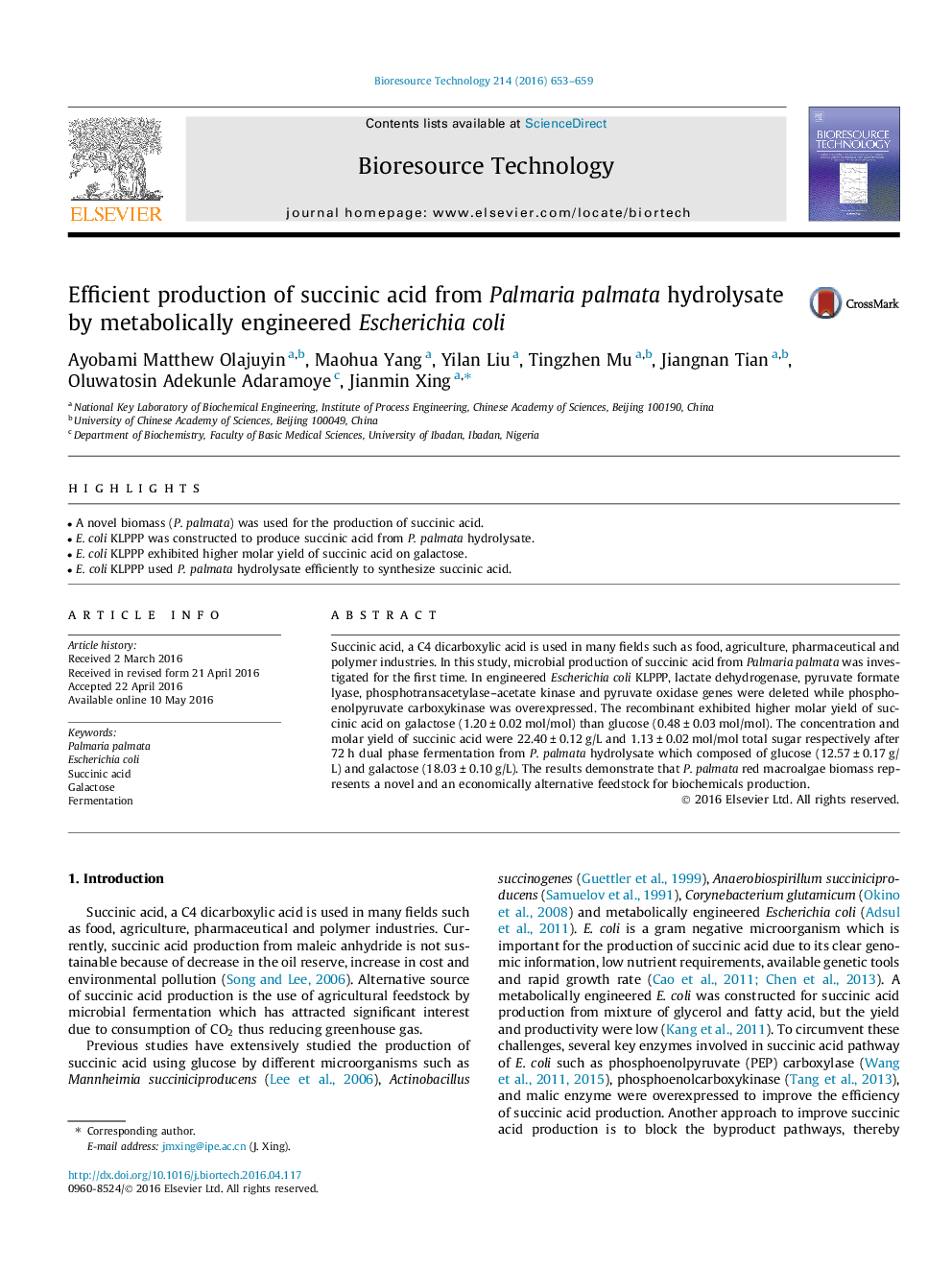| Article ID | Journal | Published Year | Pages | File Type |
|---|---|---|---|---|
| 679106 | Bioresource Technology | 2016 | 7 Pages |
•A novel biomass (P. palmata) was used for the production of succinic acid.•E. coli KLPPP was constructed to produce succinic acid from P. palmata hydrolysate.•E. coli KLPPP exhibited higher molar yield of succinic acid on galactose.•E. coli KLPPP used P. palmata hydrolysate efficiently to synthesize succinic acid.
Succinic acid, a C4 dicarboxylic acid is used in many fields such as food, agriculture, pharmaceutical and polymer industries. In this study, microbial production of succinic acid from Palmaria palmata was investigated for the first time. In engineered Escherichia coli KLPPP, lactate dehydrogenase, pyruvate formate lyase, phosphotransacetylase–acetate kinase and pyruvate oxidase genes were deleted while phosphoenolpyruvate carboxykinase was overexpressed. The recombinant exhibited higher molar yield of succinic acid on galactose (1.20 ± 0.02 mol/mol) than glucose (0.48 ± 0.03 mol/mol). The concentration and molar yield of succinic acid were 22.40 ± 0.12 g/L and 1.13 ± 0.02 mol/mol total sugar respectively after 72 h dual phase fermentation from P. palmata hydrolysate which composed of glucose (12.57 ± 0.17 g/L) and galactose (18.03 ± 0.10 g/L). The results demonstrate that P. palmata red macroalgae biomass represents a novel and an economically alternative feedstock for biochemicals production.
